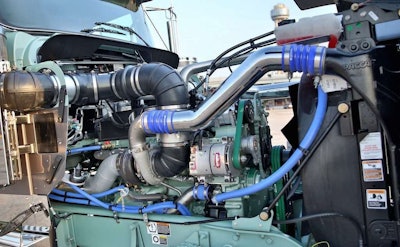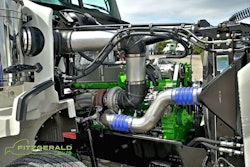 The EPA under President Trump has sought to roll back Obama-era regulations placed on glider kits and set to take effect this year.
The EPA under President Trump has sought to roll back Obama-era regulations placed on glider kits and set to take effect this year.Tennessee Technological University, paid by Fitzgerald Glider Kits to perform a study measuring the exhaust emissions of glider kit trucks, has told the U.S. Environmental Protection Agency to disregard the study until the university can “assure its validity.”
The EPA referenced the report’s conclusions last year when it proposed rescinding emissions regulations placed on glider kit makers by the Obama-era EPA in 2016. That proposal has not reached a final rule stage. The existing regulations are slated to take effect this year and would, if upheld, require glider makers like Fitzgerald to retool the older engines used in gliders to meet the new restrictions.
TTU’s study concluded that gliders do not produce greater emissions of nitrogen oxide and greenhouse gases than new trucks, contradicting EPA’s own studies. EPA cited the TTU study’s conclusions several times in its 2017 decision to roll back the Obama-era regs, though recently EPA Administrator Scott Pruitt told The New York Times the agency did not rely on the study to make that decision.
A Fitzgerald spokesman says the company “has every confidence in the integrity of the Tennessee Tech study and the personnel who conducted it. The results were not predetermined. Fitzgerald Glider Kits employees had no involvement in the monitoring or testing performed in connection with the study, nor were they involved in compiling the test data.”

The company also says it is “utterly common for universities to accept outside funding” for research projects.
In a Feb. 19 letter to Pruitt, TTU President Philip B. Oldham said the study’s research was under investigation after questions were raised by faculty members about its “methodology and accuracy.” Oldham also said the university is investigating a claim of “research misconduct related to the study.” TTU officials, when queried, referred Overdrive to a statement on its website, which only stated the research was under investigation.
Fitzgerald funded the research, which was conducted last year at its facilities. It also agreed to sponsor a new TTU research facility, the Fitzgerald Technology Complex, to be built in White County in Tennessee at the Fitzgerald Industrial Park.
The Obama-era Phase 2 regulations, finalized in late 2016, set new emissions benchmarks for tractors, trailers and engines, using phased-in hurdles to be met over the next decade. It was the first time EPA had used the Clean Air Act to regulate gliders, treating them as new vehicles and therefore bringing them under the scope of the Phase 2 standards.
Under Phase 2, glider makers would only be allowed to produce 300 vehicles a year that did not meet Phase 2 standards. After those 300, vehicles would need to meet the same standards as new trucks with new engines. Fitzgerald and others said the regulations would effectively kill the glider industry.
EPA in 2016 told Overdrive that the roughly 10,000 glider kit trucks sold annually produce about as much greenhouse gas emissions as 200,000 new trucks and about as much NOx as 100,000 new trucks.
TTU’s study, however, found otherwise. In its dynamometer-based study, it found gliders do not produce greater levels of emissions than new trucks with new engines.
Pruitt also said “gliders not only provide a more affordable option for smaller owners and operators, but also serve as a key economic driver to numerous rural communities.”
Gliders also appeal to many buyers because their engines lack emissions-reduction components. Also, any truck with a pre-2000 engine, which includes most gliders, is exempt from the electronic logging device mandate.












